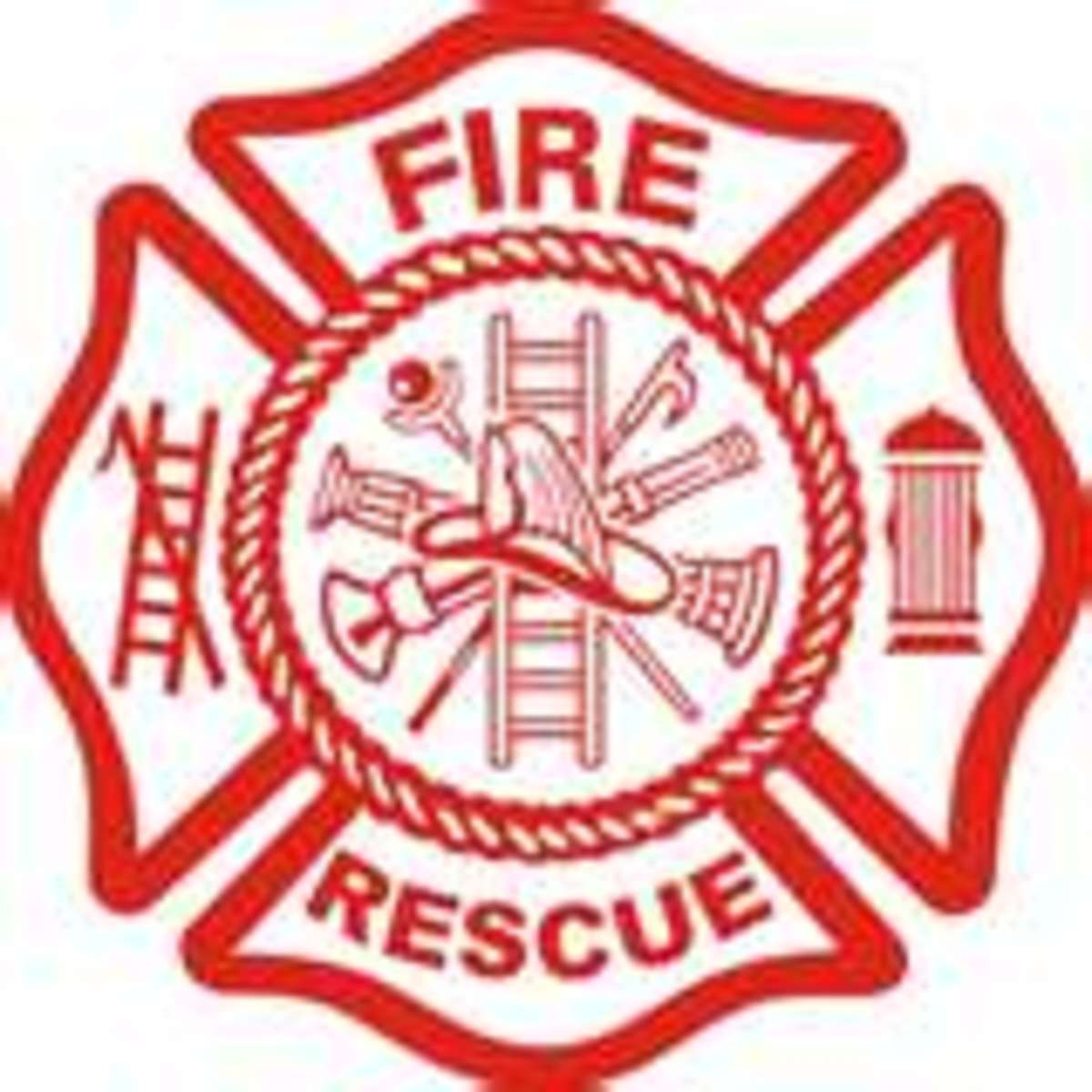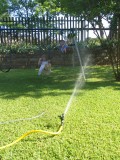Let's Talk Fire: Choosing The Right Hose
Hoses Hoses Everywhere Hoses
Every firetruck is adorned with it's fair share of hoses. 1 inch, 2 inch and even 5 inch hoses can all be found riding along the upper bed of most firetrucks. All of those different sizes of hose can make for a very confusing scene if we are not trained to know which one is the right one for the job. We must know which choice will get the fire under control and leave the least amount of damage. Which hose do we choose? That may seem very much like a probie question but it is one that even some seasoned vets have difficulty with.
With varying sizes of hoses available at our disposal we must have at the very least a working knowledge of hose characteristics and functions to make the right decision. Remember water application will only be effective and successful if the amount of water applied is sufficient enough to cool the fuel we are attacking.
What we should ask.
There are several questions that must be answered before we grab any hose off the back or side of our apparatus.
What is the fuel load and what is actually burning?
How much water do I need to extinguish the fire?
How far does my stream need to reach?
How many firefighters do I need to advance the hose?
How quick does my attack need to be?
How easy can I deploy the hose?
What is my potential fire spread?
These questions really set the guidelines for how we approach choosing the right hose to handle the job at hand. We will examine these questions more in detail a little later on.
Booster Hose Reel
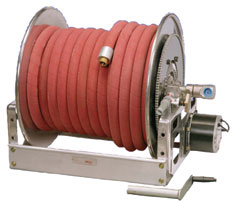
A great training resource.
The Booster Hose Warning
Some of us old dogs are used to rolling up to a scene and grabbing that booster hose and heading into the flame. We know more now then we did then and that is just unsafe practices. The booster is easy enough to deploy, operational with one staff member and very easy to maneuver but it is only 1 inch thick. This means you are really not getting a great deal of water to use in fire suppression. The booster hose has it's uses but we need to understand it is not acceptable to take one inside a structure during fire suppression.
The booster hose should be reserved for trash fires and overhaul operations. This does not mean the hose is useless it just means it has it's restrictions. The hose also does not permit the adding of other sections with the ease a bigger hose will have. Most departments don't carry extra booster hose so it limits the range you can reach with the selection of hose.
The booster line has nearly faded into firefighting history and rightfully so. I still see a great deal of departments pull them on car fires bust even then you are not getting the flow rate you would want to achieve an acceptable water flow.
Fire hoses come in different sizes
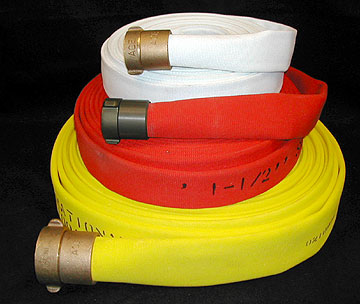
Resources from Amazon
A nice training video.
Hose Stream Characteristics
At first a young firefighter may view the wide variety of hoses and sizes of hoses as a complicated mess. This would be the furthest thing from the truth in all actuality. Hoses come in a variety of sizes for a reason. A variety of needs on scene call for a mixture of hose dimensions. The need for larger water flow means a need for a larger diameter hose. If you need to get a maximum reach into a structure you will not grab a smaller hose.
Think this way. If you pull up to a small dumpster fire you will not pull off a 2 and 1.2 inch hose. This would be overkill. This will surely extinguish the fire but that amount of water and effort is not necessary to accomplish full suppression.
Every hose has it's limitations. They also each have their positive aspects. It is up to us as firefighters to make the decision as to which hose fits the need we have at which moment. The ups and downs of each hose size need to be something every firefighter on your department understands. Let's take a look at some of the ups and downs to each hose.
It should be noted that NFPA recommends no hose smaller than 1 and ½ inch be taken inside a structure fire.
1 ½ Hose
Positive Benefits
Has very good mobility. Can be moved around with little effort.
Only needs 1 to 2 staff members to operate.
Lessens structural damage.
Very easy to control.
Can handle 2 to 3 rooms with ease.
Negative Aspects
Maximum reach is limited to below 50 feet. The average is about 30 feet.
Only pushes 40 to 125 GPM (gallons per minute)
Easier to get entangled and caught up on debris.
Easier to get crimped up and stop water flow.
1 ¾ inch Hose
Positive Benefits
Good mobility, slightly heavier than 1 ½ inch hose.
1 to 2 staff members can operate efficiently.
Structural damage from water is decreased.
Control is easy, while not as easy as smaller line.
Negative Aspects
Reach limited to 50 feet or less with the national average falling at 40 feet.
40 to 150 GPM means less water supply at disposal.
Can get tangled rather easily in the right environment.
Can get crimped and stop water supply flowing.
2 Inch Hose
The 2 inch hose is quickly becoming the national standard for fireground operations.
Positive Benefits
100 to 250 GPM with the average at about 145GPM
40 to 70 feet reach with stream. This average falls at about 52 feet.
Highly effective on fully involved fires.
Negative Aspects
Takes 2 to 3 staff members to operate comfortably.
Heavier hose means less mobility than smaller hoses.
Heavy water flow means more chance for damaging the structure.
You need to use 2 inch hose when the fire exceeds limitations of smaller diameter hoses. If you have a steady water supply and the staff to deploy a 2 inch hose effectively than you should do so.
2 ½ inch Hose
2 ½ inch hose is only slightly larger than 2 inch but the weight difference is evident immediately.
Positive Aspects
125 to 300 GPM with national averages at about 245.
Reach up to 100 feet with averages at about 90 feet.
Still have some directional control.
Negative Aspects
The heavy weight means very limited mobility.
Adds stress to firefighters.
Takes up to 4 staff members to use effectively.
Highly increases chance for structural damage.
Don't be this guy!
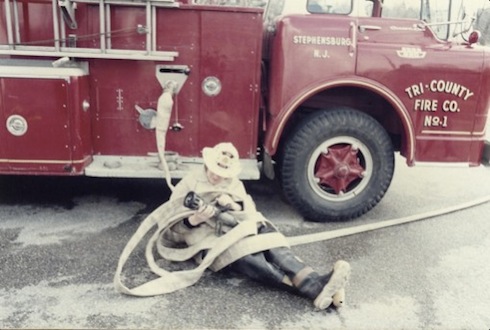
Review
Choosing a hose for fire ground operations depends on several factors. Earlier we mentioned some questions to use when making the selection of which hose is best. Let's explore these key questions and see how they help to dictate which hose is best for each job.
1 What is the fuel load and what is burning?
If we have a small garbage fire with very little smoke and heat we know we can easily take it out with a booster hose. Maybe even pull off some 1 ½ inch hose. We know there is no need to pull off a 2 ½ because it is overkill. The catch here is size vs load. Even if we have a small room we may feel that 1 ½ inch will do but we must consider what is in that room. If it is a showroom full of wood craft we may need to go larger to get the right amount of water flow to do the job. Know what is burning so you can make the right decision.
2. How much water do I actually need?
If I know I need a very small amount of water flow to extinguish a fire I need to use the hose that supplies that. To many times we find our self using less flow than needed. There is equal danger in using to much flow.
3. How far does my stream need to go?
Remember the reach limitation of each hose. That reach can be vital in getting to a fire in a very tricky location.
4. How much staff do I have on hand?
Sure the 2 ½ inch hose will knock the fire out but if you only have 2 guys on scene it is not practical to pull that size of hose off the truck. Remember that staffing can be a deciding factor in which hose we use.
5. How quickly do I need to attack this fire?
Speed is also a big factor. If you have to get to the fire quick go ahead and pull off the 1 ½ inch line and get some water on that fire. Once you have the fire suppressed enough you may want to pull a larger hose off.
6. How easily can I deploy my hose?
This falls right into the speed of what needs to be done.
7. What is my potential fire spread?
Once again speed is a factor. If I know this fire is tearing through the house I am going to try and get the easiest hose I can get until I suppress the spread of the fire.
Test 1
view quiz statisticsConclusion
It can be difficult to decide which hose needs to come off the truck at which time. Step back and really assess what you have to deal with before you make your decision and you may find that a good first choice will negate the need for a second one. Remember in our field 2nd choices can be very hazardous.
As a firefighter I always suggest my crew be familiar with each hose we carry and where to deploy it to get the best results. Training in this category is vital for a department to really reach the level of service that is required of them. Remember we can make a huge difference. Learn from the past for survival in the future.





